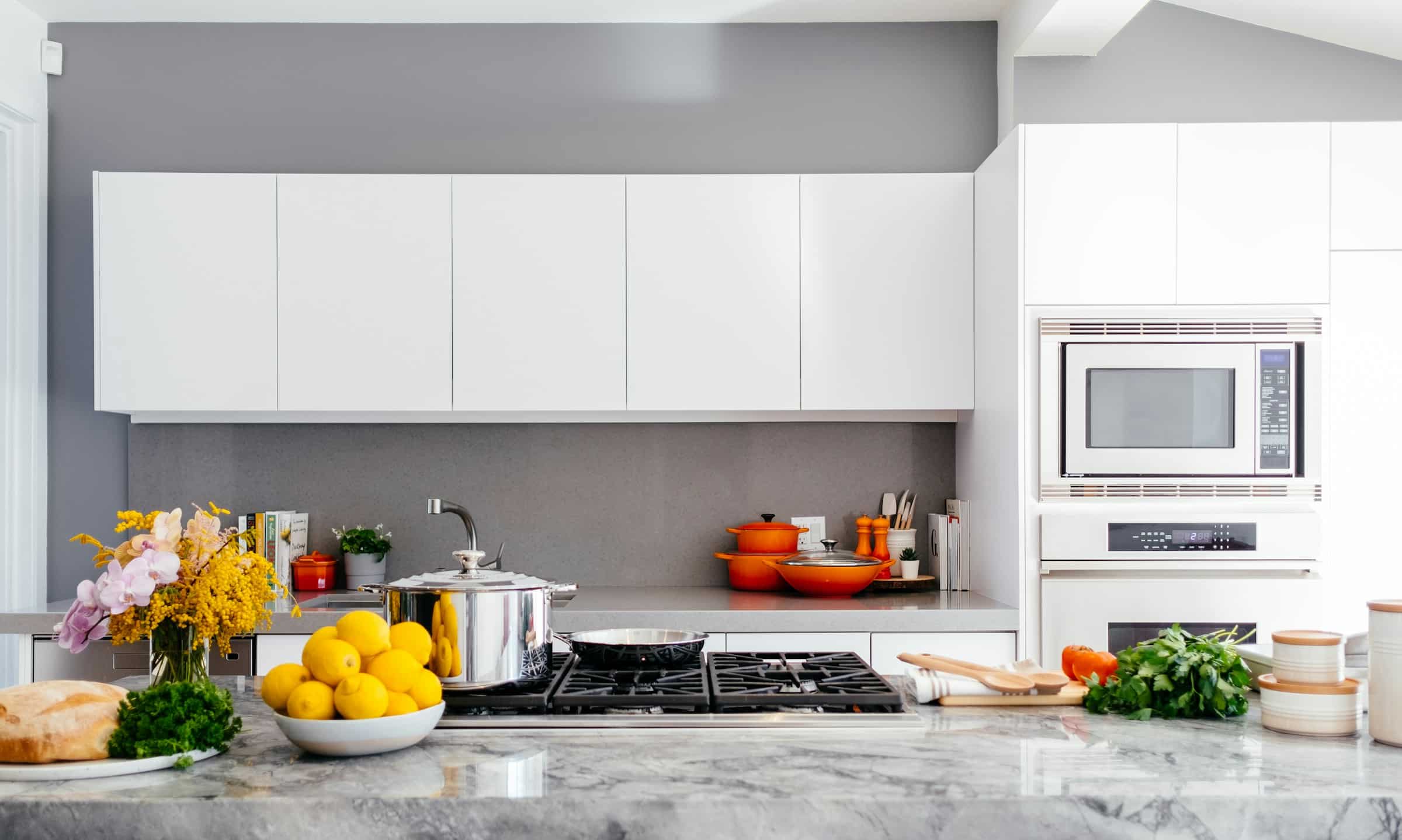What Are the Best Materials for a Durable and Stylish Kitchen Backsplash?

The kitchen is arguably the heart of the home. It’s where meals are prepared, where families gather, and where memories are made. And while functionality is key, aesthetics also play a significant role in making the kitchen a comfortable and inviting space. One element that marries the two—function and style—is the kitchen backsplash.
The backsplash serves a practical purpose, protecting the wall from splatters and spills while you cook. But it’s also a fantastic opportunity to showcase your personal style and enhance the overall design of your kitchen. With a plethora of materials to choose from, deciding on the right one can feel overwhelming. So, let’s break down the best options and why they might be the perfect fit for your kitchen.
A lire en complément : What Are the Best Techniques for Incorporating Indoor Vertical Gardens in Small Spaces?
A Timeless Classic: Ceramic and Porcelain Tiles
Ceramic and porcelain tiles are some of the most popular choices for kitchen backsplashes. Their durability, versatility, and affordability make them an excellent option for a variety of kitchen styles.
Ceramic tiles are made from clay that is fired at a high temperature, resulting in a hard and durable material. They are available in a wide range of colors, shapes, and sizes, allowing for a high level of customization. Porcelain tiles are ceramic tiles that are even more impervious to heat and water, making them an ideal choice for the kitchen.
Dans le meme genre : What’s the Best Way to Create a Hidden Litter Box Area for Cats in a Small Apartment?
Whether you’re aiming for a traditional look with a simple white subway tile or a modern edge with geometric shapes, ceramic and porcelain tiles can accommodate your design goals. Plus, these materials are easy to clean—a great bonus for an area that can get messy regularly.
The Beauty of Natural Stone
For a touch of luxury and natural beauty, you might consider a stone backsplash. Popular stone materials include granite, marble, and slate.
Granite is known for its robustness and the unique patterns that each slab offers. Marble, on the other hand, is renowned for its elegant veining and ability to elevate any space. However, both these materials are porous, meaning they can absorb liquids and potentially stain. Regular sealing can help protect these surfaces.
Slate, being less porous, is a more low-maintenance option. Its rustic yet sophisticated aesthetic can add a unique charm to your kitchen.
A stone backsplash can complement wooden cabinets beautifully, creating a warm, natural feel in the kitchen. Or, it could contrast with more modern, glossy cabinetry for an intriguing juxtaposition of styles.
Glass: Modern and Sleek
For a sleek, contemporary look, glass tiles are a fantastic choice. They reflect light beautifully, making your kitchen feel larger and brighter. Plus, they are easy to clean, resistant to stains, and don’t harbor bacteria or odors.
Glass tiles come in a near-endless array of colors and finishes. You could opt for a monochromatic look with white or neutral tiles, or make a bold statement with vibrant hues. A mirrored or metallic finish can add a touch of glamour, while a frosted finish can create a softer, more subtle look.
The Industrial Appeal of Metal
Metal backsplashes are increasing in popularity, particularly in modern and industrial-style kitchens. Materials like stainless steel, copper, and tin offer a cool, contemporary feel.
Not only are metal backsplashes extremely durable, but they are also resistant to heat and easy to clean. Stainless steel is particularly popular due to its sleek appearance and ability to match with a range of other materials and colors in the kitchen.
Wood: A Touch of Warmth
While not a traditional choice, a wood backsplash can add an immense amount of warmth and character to a kitchen. It’s an ideal choice if you’re aiming for a rustic or farmhouse-style space.
Wood does need to be sealed properly to protect it from moisture and heat, and it requires a bit more maintenance than some other materials. However, the natural beauty and warmth it brings to the kitchen can make it well worth the effort.
Each of these materials has its own unique qualities and charm, making them all excellent choices for a kitchen backsplash. Remember, the best material for your backsplash is one that will complement your kitchen’s design and meet your practical needs while reflecting your personal style.
Exotic Allure: Luxurious Quartz
In the realm of backsplash materials, quartz is a more recent player that has quickly gained popularity. Quartz is a man-made stone comprising of crushed quartz mixed with resin in a ratio of 93% quartz to 7% resin. It is then formed into slabs that offer the look of natural stone but with enhanced durability and resistance.
Being a non-porous material, quartz is resistant to staining and bacteria, making it a hygienic choice for your kitchen backsplash. Quartz backsplashes offer a sleek, continuous look as they can be customized to match your countertop perfectly.
Quartz is available in various colors and patterns, from solid colors to designs that mimic the appearance of natural stones like marble or granite. It’s a versatile choice that can suit any kitchen design. From a modern minimalistic look with a white quartz backsplash to a more traditional feel with a patterned quartz design, the possibilities are endless.
Though quartz is more expensive than ceramic or porcelain tiles, its durability and low-maintenance nature make it a worthwhile investment. Quartz backsplashes require minimal upkeep—just a simple wipe down with a damp cloth, and it retains its lustrous sheen, making it a practical and stylish choice for a kitchen backsplash.
Quirky and Unique: Cement Tiles
Cement tiles are another interesting choice for a kitchen backsplash. They offer a handcrafted, artisanal aesthetic that is hard to replicate with other materials. Each cement tile is hand-poured and cured, resulting in a unique, beautifully imperfect tile.
Cement tiles come in a wide array of patterns, ranging from traditional Moroccan designs to modern geometric patterns. Their vivid colors and intricate designs can make your backsplash the focal point of your kitchen.
Despite their delicate appearance, cement tiles are quite durable. They are naturally resistant to heat and moisture, which makes them suitable for a kitchen environment. However, cement tiles do require sealing to prevent staining.
While cement tiles can be more expensive than ceramic or porcelain tiles, they offer unparalleled originality. They are a perfect choice if you are looking to infuse your kitchen with some personality and charm.
Conclusion
The kitchen backsplash plays a pivotal role in tying together your kitchen design. Beyond its functional aspect of protecting your kitchen walls from spills and splatters, it offers a canvas to express your style and personality. The right backsplash can transform your kitchen from ordinary to extraordinary.
Choosing the perfect backsplash material depends on various factors—your kitchen’s overall design, your budget, and your lifestyle. Whether you prefer the timeless elegance of ceramic or porcelain tiles, the natural beauty of stone, the sleek modernity of glass, the industrial charm of metal, the warmth of wood, the luxurious appeal of quartz, or the unique quirkiness of cement tiles, each material has its own unique attributes to consider.
Always remember to pick up a tile sample before making the final decision. Look at it in different lightings, against your countertops and cabinetry, to ensure it complements your kitchen perfectly.
With careful consideration and planning, you can select the ideal backsplash that is both functional and stylish, enhancing the aesthetics of your kitchen while serving its practical purpose. The perfect backsplash can truly make your kitchen the heart of your home.
